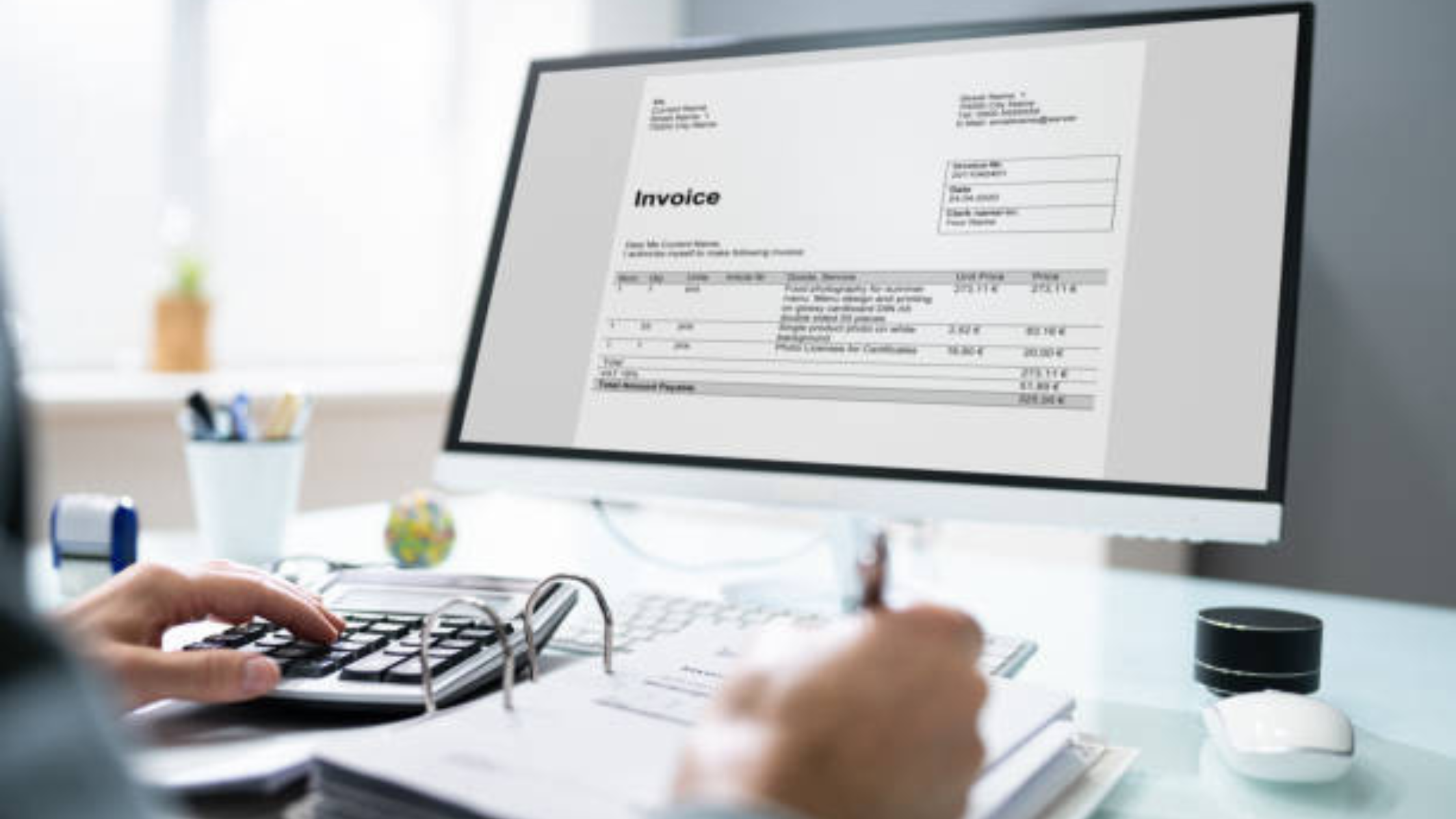Why Email Receipts are Essential for Modern Businesses

Email receipts have become an essential tool for modern businesses. Gone are the days of paper receipts cluttering up wallets and desks. Email receipts offer a convenient and eco-friendly way to provide customers with proof of purchase while also allowing businesses to gather valuable data and insights. This shift towards digital receipts not only streamlines the checkout process but also enhances customer experience by offering a more organized and efficient way to track transactions. Moreover, email receipts serve as a powerful marketing tool, enabling businesses to promote new products, services, or special offers directly to their customers' inboxes. With the rise of online shopping and e-commerce, the importance of email receipts in building customer relationships and driving sales cannot be overstated. In this digital age, embracing email receipts is not just a trend but a strategic necessity for businesses looking to stay competitive and relevant in the market.
Benefits of Email Receipts
Businesses are constantly looking for ways to improve customer experience, streamline processes, and reduce their environmental impact. One simple yet effective way that businesses can achieve all these goals is by switching from traditional paper receipts to email receipts. Email receipts offer a wide range of benefits for both businesses and customers alike.
Enhanced Customer Experience and Convenience
One of the primary benefits of email receipts is the enhanced customer experience they provide. By sending receipts directly to customers' email inboxes, businesses can offer a more convenient and seamless transaction process. Customers no longer have to worry about keeping track of paper receipts or dealing with fading ink. They can easily search for and access their email receipts whenever needed, making returns, exchanges, and warranty claims a breeze.
Reduced Paper Waste and Environmental Impact
Another significant advantage of email receipts is the positive impact they have on the environment. Traditional paper receipts contribute to a significant amount of paper waste, most of which ends up in landfills. By transitioning to email receipts, businesses can help reduce their carbon footprint and minimize the demand for paper production. This eco-friendly approach aligns with the growing trend of sustainability and corporate social responsibility.
Improved Organization and Record-Keeping for Businesses
From a business perspective, email receipts offer improved organization and record-keeping capabilities. Digital receipts can be automatically sorted, archived, and easily searchable, making it simpler for businesses to track transactions, analyze purchase patterns, and manage financial records. This streamlined process not only saves time and resources but also enhances overall operational efficiency.
Cost-Effectiveness and Accessibility
In addition to the environmental and organizational benefits, email receipts also offer cost-effectiveness and accessibility advantages. Businesses can save on printing costs associated with traditional receipts, including paper, ink, and printer maintenance. Moreover, email receipts can be accessed from anywhere at any time, providing customers with the convenience of having their transaction records readily available on their electronic devices.
Personalization and Marketing Opportunities
Email receipts present opportunities for businesses to personalize their communication with customers and leverage marketing strategies. By including personalized messages, promotional offers, or links to related products/services in email receipts, businesses can enhance customer engagement and potentially drive additional sales. This personalized approach not only strengthens customer relationships but also increases brand loyalty and customer retention.
Data Analytics and Insights
Another advantage of email receipts is the wealth of data they can provide for businesses. By analyzing email receipt data, businesses can gain valuable insights into customer behavior, preferences, and purchasing patterns. This data-driven approach enables businesses to tailor their marketing campaigns, improve product offerings, and optimize their overall business strategies based on real-time customer feedback.
Conclusion
The benefits of email receipts extend far beyond just reducing paper waste and enhancing customer experience. By embracing email receipts, businesses can unlock a multitude of advantages, including cost savings, environmental sustainability, improved organization, personalized marketing opportunities, and valuable data analytics. As technology continues to advance, email receipts remain a practical and efficient solution for modern businesses looking to innovate, connect with customers, and drive sustainable growth.
Legal Compliance and Security
Where data privacy and security are paramount concerns, businesses must prioritize legal compliance and security measures to protect sensitive customer information. This blog section will delve into two crucial aspects: Ensuring compliance with regulations like GDPR and CCPA, and Securing sensitive customer information.
Understanding GDPR and CCPA
Key Provisions of GDPR: Explore the fundamental principles of the General Data Protection Regulation (GDPR), such as data minimization, purpose limitation, and accountability.
Overview of CCPA: Provide an overview of the California Consumer Privacy Act (CCPA) and its implications for businesses operating in California.
Cross-Border Data Transfers: Discuss the challenges and considerations related to cross-border data transfers under GDPR and CCPA, emphasizing the need for appropriate safeguards.
Data Subject Rights: Explain the rights granted to data subjects under GDPR and CCPA, including the right to access, rectification, and erasure of personal data.
Strategies for Compliance
Data Mapping and Inventory: Highlight the importance of conducting data mapping exercises and maintaining a comprehensive inventory of personal data to facilitate compliance with GDPR and CCPA.
Privacy by Design: Advocate for the implementation of privacy by design principles to embed data protection measures into business processes and systems from the outset.
Data Protection Impact Assessments: Explain the role of Data Protection Impact Assessments (DPIAs) in identifying and mitigating privacy risks associated with data processing activities.
Vendor Management: Address the significance of vetting and managing third-party vendors to ensure they adhere to data protection requirements imposed by GDPR and CCPA.
Securing Sensitive Customer Information
Threat Landscape Analysis: Discuss the evolving threat landscape and the importance of conducting regular risk assessments to identify vulnerabilities and threats to customer data.
Multi-Factor Authentication: Advocate for the implementation of multi-factor authentication mechanisms to enhance the security of customer accounts and prevent unauthorized access.
Incident Response Planning: Stress the need for developing and testing incident response plans to effectively respond to data breaches and security incidents in a timely manner.
Continuous Monitoring and Auditing: Emphasize the value of continuous monitoring and auditing of security controls to detect and remediate security incidents proactively.
By addressing these key points and implementing robust legal compliance and security measures, businesses can not only safeguard sensitive customer information but also build trust and credibility with their clientele.
Customization and Branding
Opportunities for Branding and Marketing Through Email Receipts.
Every interaction with a customer is an opportunity to reinforce your brand and leave a lasting impression. Email receipts, often overlooked as a branding tool, can be a powerful way to connect with your customers even after they have made a purchase. By customizing email receipts with your brand colors, logo, and a personalized message, you can create a memorable experience that sets you apart from your competitors.
Personalization for a Tailored Customer Experience
Personalization is key to creating a tailored customer experience that resonates with your audience. By leveraging customer data and purchase history, you can customize email receipts to include product recommendations, special offers, or personalized thank-you notes. This not only enhances the customer experience but also increases the likelihood of repeat purchases and brand loyalty.
Where consumers are bombarded with marketing messages from all directions, standing out and making a lasting impression is crucial for businesses. Email receipts, a commonly underutilized touchpoint, present a unique opportunity for businesses to reinforce their brand identity. By incorporating elements such as brand colors, logos, and engaging content, email receipts can become a powerful branding tool that keeps your brand top of mind even after the purchase is complete.
Moreover, personalization goes beyond just addressing the customer by name. It involves understanding their preferences, purchase history, and behavior to deliver a truly tailored experience. Imagine receiving an email receipt that not only thanks you for your purchase but also suggests complementary products based on your previous buys or offers a discount on your next purchase. This level of personalization not only delights customers but also encourages them to engage further with your brand.
By investing in customization and branding within email receipts, businesses can create a seamless brand experience that extends beyond the point of sale. Consistent branding across all customer touchpoints, including transactional emails like receipts, builds trust and loyalty. It's not just about the purchase; it's about the entire customer journey and the emotions evoked at each interaction point.
The potential for customization and branding through email receipts is vast. It's a chance for businesses to showcase their unique identity, connect with customers on a personal level, and drive long-term loyalty. By treating email receipts as more than just transaction confirmations and infusing them with branding elements and personalized touches, businesses can turn a mundane communication into a valuable marketing asset that strengthens customer relationships and drives repeat business.
Automation and Efficiency
Automation plays a crucial role in enhancing efficiency and productivity. Let's delve into how businesses can streamline their processes through automated email receipt systems and save valuable time and resources.
Automated Email Receipt Systems: A Game Changer
One of the key areas where automation can significantly impact efficiency is in managing email receipts. By implementing automated email receipt systems, businesses can eliminate manual data entry tasks, reduce errors, and ensure timely processing of receipts. This not only saves time but also enhances accuracy and compliance with financial regulations.
Saving Time and Resources for Businesses
Time is money, and for businesses, every minute counts. Automation not only speeds up processes but also frees up valuable human resources to focus on more strategic tasks. By automating repetitive and time-consuming processes like data entry, businesses can redirect their workforce towards activities that drive growth and innovation.
The Cost-Efficiency of Automation
Beyond time savings, automation also brings cost-efficiency benefits to businesses. By reducing the need for manual intervention, businesses can lower operational costs, minimize errors, and improve overall financial performance. This cost-effectiveness makes automation a smart investment for businesses looking to optimize their operations.
Embracing Automation for Future Success
Automation is no longer a luxury but a necessity for businesses aiming to stay competitive in today's digital age. By embracing automation tools and systems, businesses can unlock new levels of efficiency, productivity, and profitability. It's time for businesses to harness the power of automation and pave the way for a more streamlined and efficient future.
Enhancing Customer Experience through Automation
Automation not only benefits internal processes but also enhances the customer experience. By automating customer interactions, businesses can provide quicker responses, personalized services, and round-the-clock support. This leads to increased customer satisfaction and loyalty, ultimately driving business growth.
Data Security and Compliance
With the rise of cyber threats and data breaches, ensuring data security and compliance is paramount for businesses. Automated systems can help in enforcing security protocols, monitoring data access, and ensuring compliance with regulations such as GDPR and HIPAA. By incorporating automation in data security measures, businesses can mitigate risks and safeguard sensitive information.
Scalability and Flexibility
As businesses grow, scalability and flexibility become crucial factors for success. Automation allows businesses to scale their operations efficiently without compromising quality. Whether it's handling increased transaction volumes or adapting to market changes, automated systems provide the agility needed to stay competitive in dynamic business environments.
Continuous Improvement through Automation
Automation is not a one-time implementation but a journey towards continuous improvement. By analyzing data generated through automated processes, businesses can identify bottlenecks, optimize workflows, and drive ongoing enhancements. This iterative approach to automation ensures that businesses remain agile, adaptive, and always at the forefront of innovation.
Conclusion
Email receipts have become an essential tool for modern businesses due to their convenience, efficiency, and eco-friendliness. By adopting email receipts, businesses can streamline their operations, enhance customer experience, and contribute to a more sustainable environment. Embracing this digital alternative not only benefits the business but also aligns with the growing trend towards paperless transactions in today's digital age. It is clear that email receipts are a valuable asset that no modern business should overlook.







